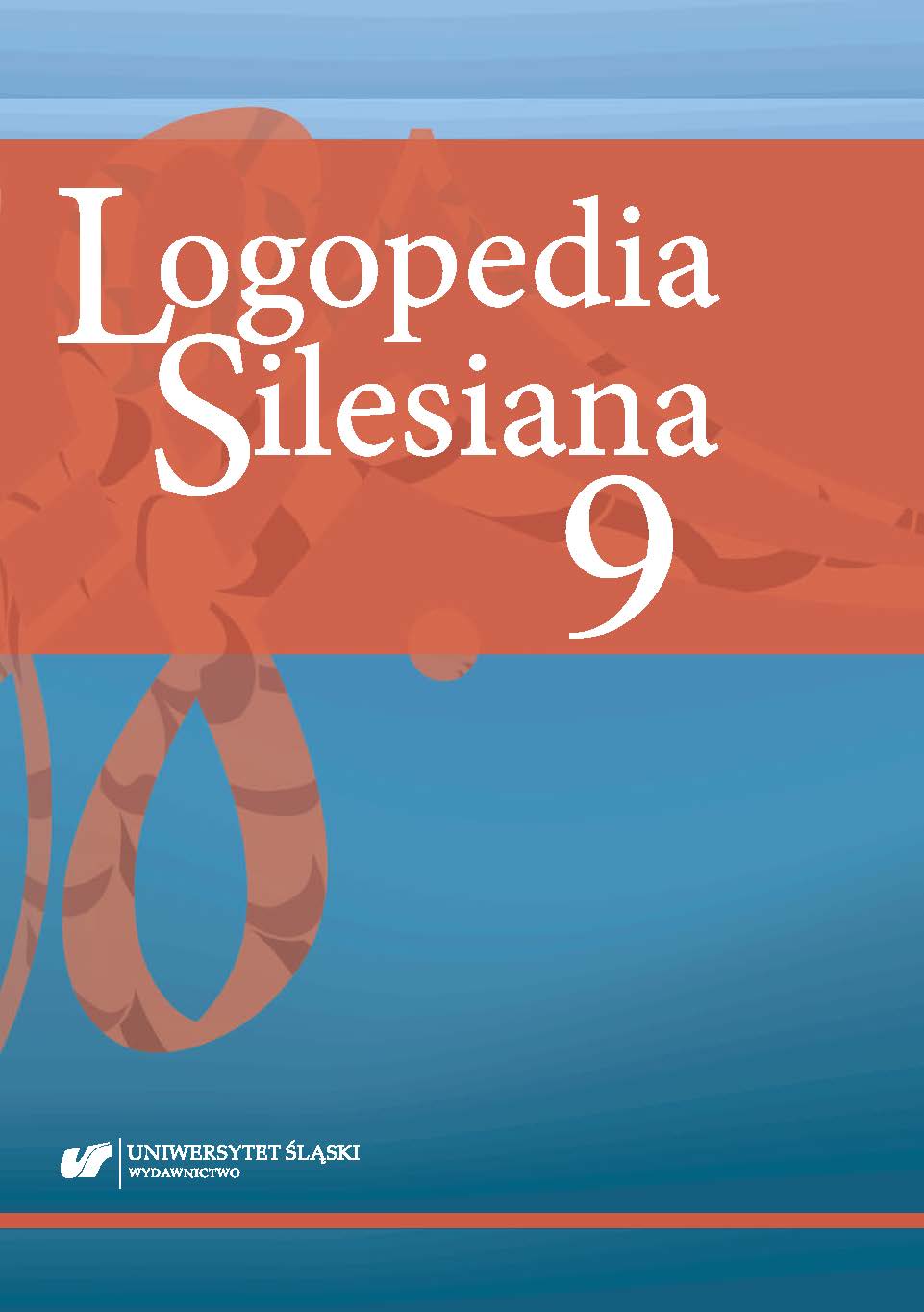Borowiecka, R. (2010). Dziecko w równowadze – ćwiczenia równoważne i koordynacyjne, stymulujące prawidłowy rozwój ruchowy, poznawczy i emocjonalny. Warszawa: Centrum Edukacji Diagnozy i Terapii Psychologiczno-Pedagogicznej Renata Borowiecka.
Google Scholar
Centrum Metody Johansena IAS. http://www.johansen-ias.pl [data dostępu: 9.03.2020].
Google Scholar
Centrum Metody Johansena IAS (2013). Materiały szkoleniowe z Kursu wprowadzającego do metody Johansena. Warszawa.
Google Scholar
Centrum Metody Johansena IAS (2014). Materiały z superwizji metody Johansena. Warszawa.
Google Scholar
Centrum Metody Johansena IAS (2018). Materiały z superwizji metody Johansena. Warszawa.
Google Scholar
Keith, R.W. (2004). Zaburzenia procesów przetwarzania słuchowego – postępy w rozumieniu istoty choroby. Otolaryngologia, 3(1), 7–14.
Google Scholar
Keith, R.W. (2005). Zaburzenia procesów przetwarzania słuchowego. W: M. Śliwińska-Kowalska (red.), Audiologia kliniczna (s. 367–375). Łódź: Oficyna Wydawnicza Mediton.
Google Scholar
Kruczyńska, A., Kurkowski, Z.M. (2012). Centralne procesy przetwarzania słuchowego u dzieci kształconych i niekształconych muzycznie a wyniki w nauce. Nowa Audiofonologia, 1(3), 56–61.
Google Scholar
Kruczyńska, A., Kurkowski, Z.M. (2013). Muzyka i jej oddziaływanie na organizm człowieka. Nowa Audiofonologia, 2(3), 24–29.
Google Scholar
Kurkowski, Z.M. (2013). Audiogenne uwarunkowania zaburzeń komunikacji językowej. Lublin: Wydawnictwo Uniwersytetu Marii Curie-Skłodowskiej.
Google Scholar
Kurkowski, Z.M. (2017). Trudności słuchowe a ośrodkowe zaburzenia przetwarzania słuchowego z perspektywy logopedii. Logopedia, 46, 105–111.
Google Scholar
Metoda Tomatisa. Publikacja końcowa projektu „Uwaga! Sposób na sukces” (2013). Praca zbiorowa. Gdańsk.
Google Scholar
Polewczyk, I. (2014). Dziecko z CAPD (Centralnymi Zaburzeniami Przetwarzania Słuchowego) w szkole – strategie diagnostyczne i terapeutyczne. W: J. Skibska (red.), Dziecko z wadą słuchu oraz Centralnymi Zaburzeniami Przetwarzania Słuchowego (CAPD). Wybrane problemy (s. 11–26). Kraków: Libron – Filip Lohner.
Google Scholar
Przybyla, O., Kasica-Bańkowska, K. (2012). Diagnoza różnicowa dzieci i młodzieży z zaburzeniami centralnych procesów przetwarzania słuchowego. Nowa Logopedia, 3, 203–216.
Google Scholar
Przybyla, O., Wall, C. (2012). Ocena sprawności grafomotorycznej ucznia z zaburzeniami centralnych procesów przetwarzania słuchowego – spostrzeżenia i wnioski. Forum Logopedyczne, 20, s. 219–235.
Google Scholar
Przybyla, O. (2014–2015). Zaburzenia centralnych procesów przetwarzania słuchowego. Studium przypadku jedenastoletniego chłopca. Logopedia, 43–44, 397–414.
Google Scholar
Przybyla, O. (2017). W trosce o stan rozwoju wyższych funkcji słuchowych u dzieci – propozycja przesiewowych diagnoz na podstawie platformy APD Medical. Logopedia, 46, s. 111–123.
Google Scholar
Rostkowska, J., Kobosko, J., Kłonica, K.L. (2013). Problemy emocjonalno-społeczne i behawioralne u dzieci z centralnymi zaburzeniami przetwarzania słuchowego (CAPD) w ocenie rodziców. Nowa Audiofonologia, 2(1), 29–35.
Google Scholar
Senderski, A. (2014). Rozpoznawanie i postępowanie w zaburzeniach przetwarzania słuchowego u dzieci. Otolaryngologia, 13(2), 77–81.
Google Scholar
Zaborniak-Sobczak, M., Bieńkowska, K.I., Senderski, A. (2018). Centralne zaburzenia przetwarzania słuchowego: od teorii do praktyki edukacyjnej. Wybrane problemy. Niepełnosprawność. Dyskursy pedagogiki specjalnej, 29, 115–132.
Google Scholar


 https://doi.org/10.31261/LOGOPEDIASILESIANA.2020.09.04
https://doi.org/10.31261/LOGOPEDIASILESIANA.2020.09.04

 10.31261/LOGOPEDIASILESIANA
10.31261/LOGOPEDIASILESIANA